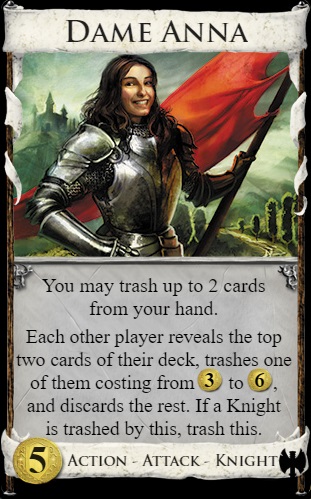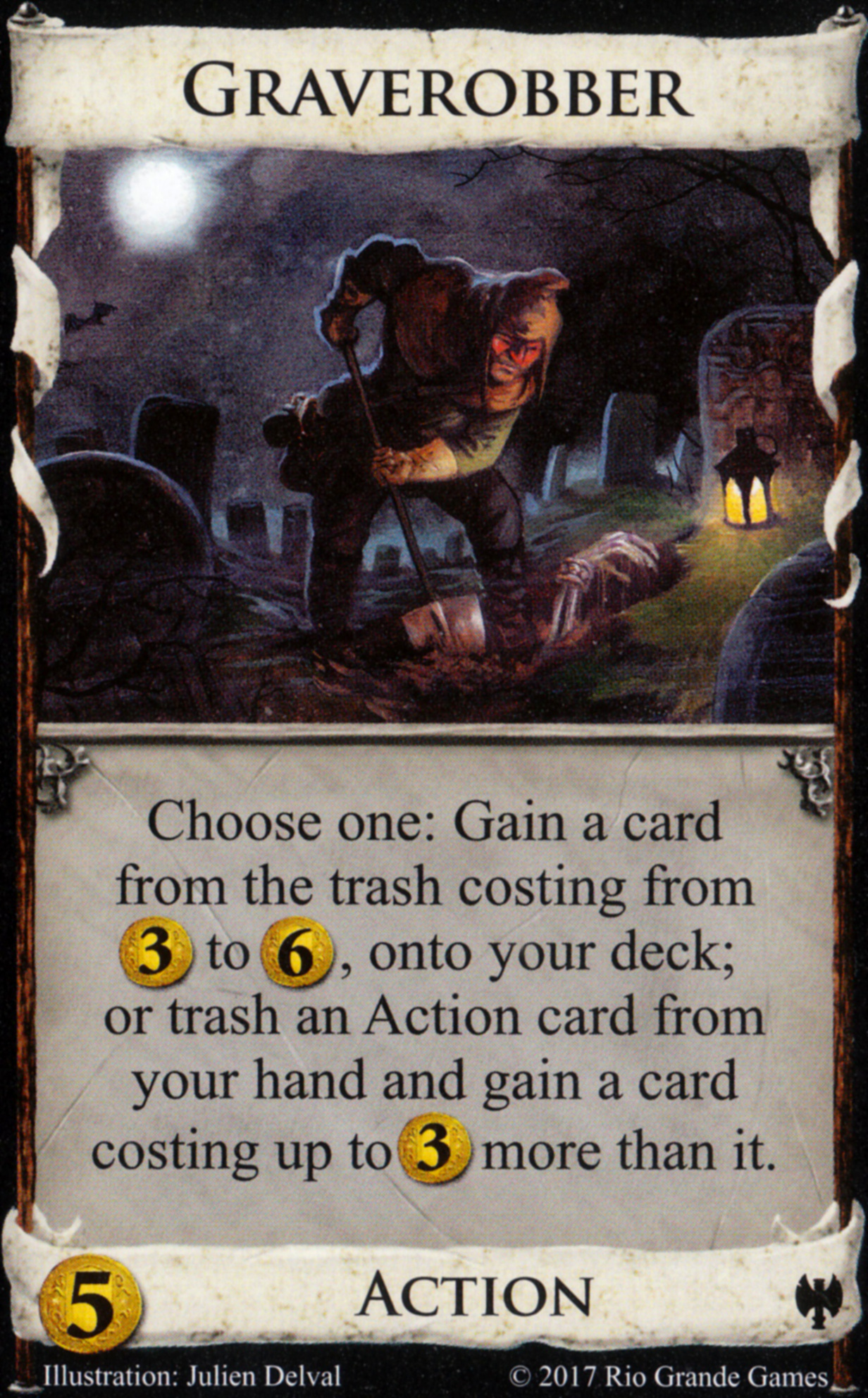1
Dominion Articles / Duration Draw and Stop Card Capacity
« on: March 28, 2018, 12:38:37 pm »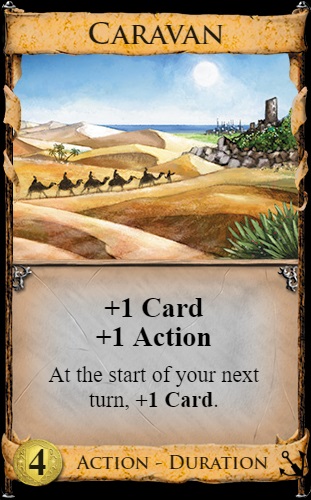
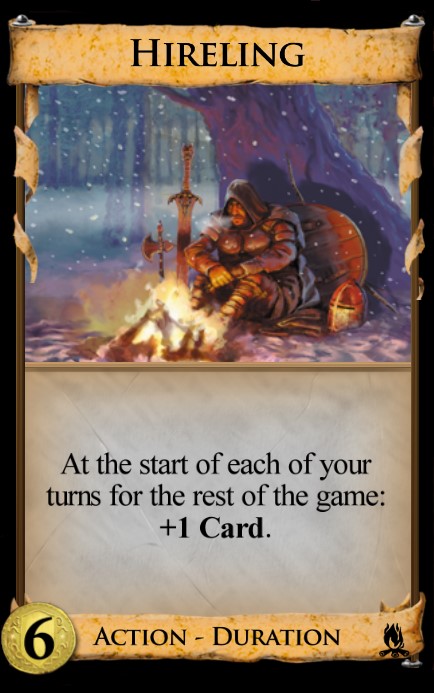
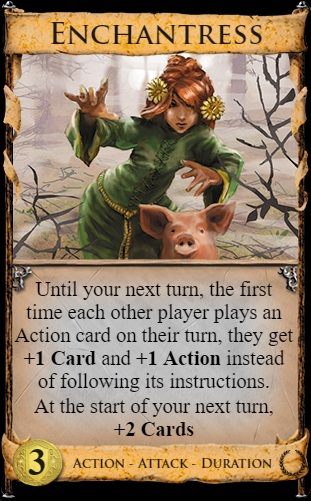
tl;dr: More than just making it easier to line up your engine components, starting with a larger handsize increases the hard limit on the number of stop cards you can have in your deck before you dip below a 100% chance to draw your deck. Use this to your advantage when you decide on whether to add stop cards to your deck.
---
In this article, I'm going to be sharing some thoughts on the worth of pursuing duration cards that draw at the start of your turn. Having a larger starting handsize improves your deck's reliability by making it more likely that you start off with a combination of cards that will help you really kick off your turn. But, the benefits of duration draw go further than that. Duration draw also lets you flat out do more with your deck, and I'll be explaining what I mean by that.
Definitions
I'm going to define a couple terms here for clarity that apply specifically to the context of this article. A "stop card" is any card that doesn't draw a card from your deck, and includes Throne Room variants. For simplicity, this article considers actions a non-issue, so Smithy is not a stop card. One's "stop card capacity" (SCC) is the number of stop cards your entire deck can contain before you risk not drawing your entire deck in a turn*.
Impact of Duration Draw
You start the game with a starting handsize of 5 and a SCC of 4. You also start the game with 10 stop cards, so realistically you will never get your stop card count within your SCC without deck thinning. A simple example of when you should be mindful of SCC is in a Bishop/Fortress infinite VP game. With an SCC of 4, you can have up to 4 Bishops (which are stop card) in your deck and still be guaranteed to draw and play them all. The moment you add a 5th Bishop, you run the risk of having a starting hand of all Bishops with no Fortresses to trash. If you and your opponent's VP were equal up to this point, then this dud is pretty much game losing.
But duration draw changes this math, in a way that pure trashing and pure draw cannot, by increasing your starting hand size and hence your SCC. Now imagine you have the same deck, but you have two Caravans that you alternate playing each turn, or you have a Hireling in play. Now you have a starting hand of 6, and an SCC of 5. Hence, you can now gain a 5th Bishop and still be guaranteed to play all 5 Bishops, eventually overtaking the VP count of a player that can only support playing 4 Bishops a turn.
So we see here that duration draw is more than just a reliability boost. It is actually a boost to the maximum potential of your deck because it allows you to include more stop cards in your deck before you have a chance to no longer draw your entire deck. Even if you have 10 Labs or 10 Smithies with the +1 Action token, so long as you have at least 5 stop cards, you might end up having a starting hand of all 5 of them if you are at the top of your shuffle, unlikely though this may be. The likelihood of such a dud of course increases the more stop cards you add relative to the size of your whole deck and SCC.
Some duration duration draw cards are stop cards the turn they are played, but still result in a net increase in SCC if one copy is played each turn. Examples of these cards are Enchantress, Den of Sin, and Haunted Woods. Enchantress and Den of Sin are stop cards when played, but give you a starting handsize of 7 and an SCC of 6. So you add 1 stop card but increase SCC by 2, allowing you to add an additional stop card to your deck before risking a dud turn. Haunted Woods gives a starting handsize of 8 and a net increase of SCC by 2.
Some duration draw cards are more peculiar in how they influence SCC. Haven increases it by one next turn at the cost of a card this turn, but you won't reduce your SCC this turn so long as you do not set aside a card that is necessary to draw your deck (e.g. setting aside a cantrip in a deck of only cantrips and stops cards), with stop cards being safe to set aside if the goal is to see all your cards. Even more interesting is the Dungeon duration effect, which if received at the top of your shuffle, can still allow you to see all your non-stop cards before your stops cards if your total number of stops cards minus the number of stop cards you discard to Dungeon is within your SCC (e.g. having 6 or less stop cards and then discarding two will let you see all your non-stop cards with a starting handsize of 5 and SCC of 4), and then you can still draw deck if those non-stop cards all together can raise your handsize to the number of stop cards in deck (e.g. you have Laboratory). And then there's Wharf, which isn't even a stop card the turn you play it and thus having the same net effect on SCC as Haunted Woods. By this measure, Wharf is busted strong.
I'll make a special mention to some non-duration cards that increase SCC. Any card that can push draw cards to your next starting hand can increase SCC. This includes Scheme and topdecking cards like Count or Mandarin. Combining discard and draw can also seed your next starting hand with spare draw cards if your deck and discard are empty, for example discarding spare draw cards with Storeroom for coin then playing a single draw card. And of course the Expedition event increases starting handsize and thus SCC.
Why This Matters
Stop cards can have powerful effects that are really good at helping you win the game. Province/Colony, Gold/Platinum, Bridge, and Haggler are just a few examples of potentially important stop cards. If your stop card count is below your SCC, you can be more aggressive in gaining more without any fear of a dud. While games where players slowly drain Provinces are likely to have players eventually exceed their SCC, games where you gain a Province or two then pile out the next turn, or at least threaten to, may not.
Knowing exactly how many stop cards you can support is something that should always be on your mind in games with strong deck thinning, and you should be aware that investing in duration draw increases the hard limit on how many you can support.
Thank you for reading.
*If the size of your deck is exactly equal to your starting hand size, then you still draw your deck even if all your cards are stop cards and by my definition you exceeded your stop card capacity by 1 in cases where your deck size is greater than your starting handsize. This matters particularly with Donate.
Edit: expanded the section discussing specific duration cards and their effect on stop card capacity, and remove the "StC" acronym for "stop card".
Edit 2: Expanded impact of duration draw section with explanation on dudding with regular draw and with examples of non-duration cards that increase stop card capacity. Also replaced mention of University in the bit about good stop cards with Haggler.
Edit 3: removing confusing bits in the definition of stop cards.
This article is now on the Dominion Strategy Blog: https://dominionstrategy.com/2018/04/19/duration-draw/

 .
. . I mean, you can gain a Silver to hand, but Adventurer already drew you two Copper in the worst case, and didn't make you topdeck a card afterwards either. Yeah Artisan can smooth out your treasure if you are overflowing in coin, but generally I am not a fan of cards that tend to only be good for mitigating bad luck.
. I mean, you can gain a Silver to hand, but Adventurer already drew you two Copper in the worst case, and didn't make you topdeck a card afterwards either. Yeah Artisan can smooth out your treasure if you are overflowing in coin, but generally I am not a fan of cards that tend to only be good for mitigating bad luck.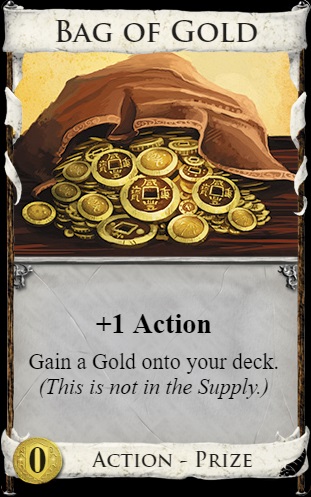
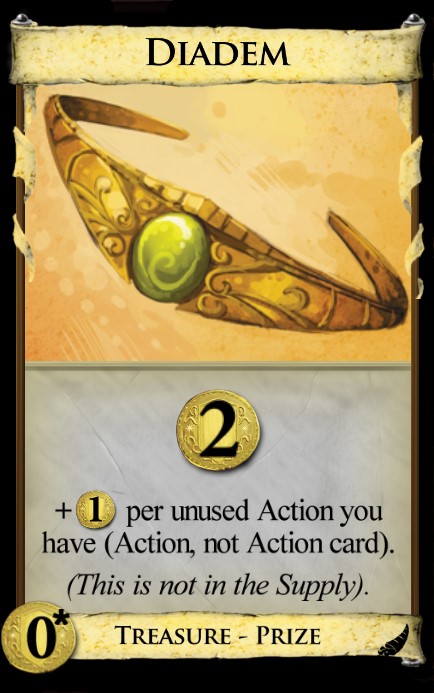
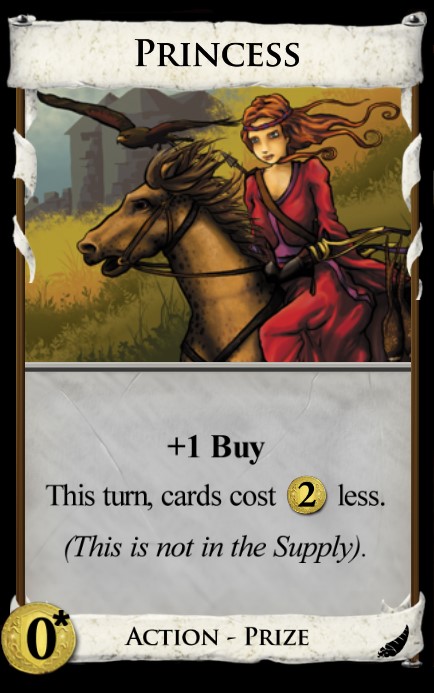
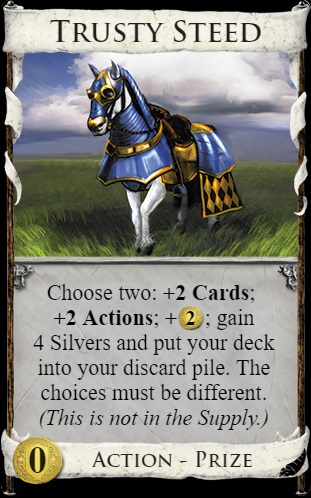
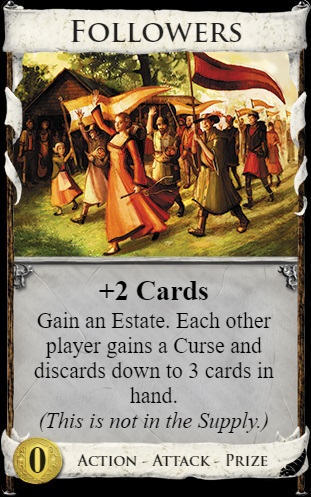
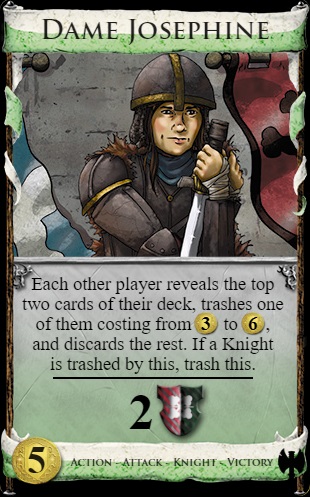
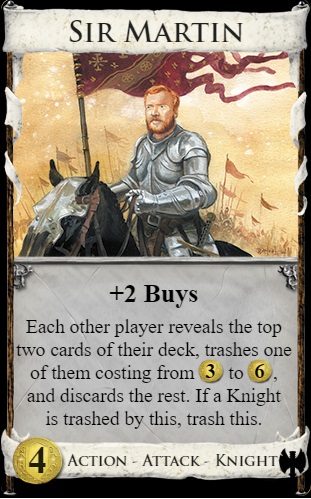
 ? How can Sir Martin possibly be this low? Well I'll tell you, the + Buys have trouble lining up with a hand that produces enough coin to make use of it in games that involve Knights, whether that's because the Knights keep trashing your cards or because you bought a whole bunch of Knights instead of economy. If somehow the extra buys do happen to be very powerful on a specific board, you can bet it will get trashed by other Knights at some point. It might as well be a vanilla Knight for the most part, except it costs
? How can Sir Martin possibly be this low? Well I'll tell you, the + Buys have trouble lining up with a hand that produces enough coin to make use of it in games that involve Knights, whether that's because the Knights keep trashing your cards or because you bought a whole bunch of Knights instead of economy. If somehow the extra buys do happen to be very powerful on a specific board, you can bet it will get trashed by other Knights at some point. It might as well be a vanilla Knight for the most part, except it costs 

 bonus is useful for when you need to hit important price points, say for buying Province or for buying more Knights. It just so happens that the other Knights above Dame Sylvia in rank also have good bonuses to go along with them.
bonus is useful for when you need to hit important price points, say for buying Province or for buying more Knights. It just so happens that the other Knights above Dame Sylvia in rank also have good bonuses to go along with them.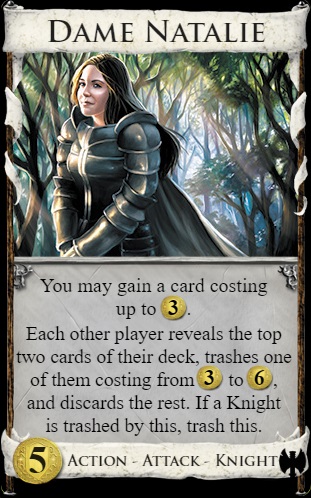
 . You might imagine the scenario where Dame Natalie acts as an awesome gainer that helps your engine get its pieces just fast enough for it to triumph, but honestly just gaining a Silver with Dame Natalie is already convenient enough to help counteract all the cards you could be losing to opposing Knights.
. You might imagine the scenario where Dame Natalie acts as an awesome gainer that helps your engine get its pieces just fast enough for it to triumph, but honestly just gaining a Silver with Dame Natalie is already convenient enough to help counteract all the cards you could be losing to opposing Knights. 

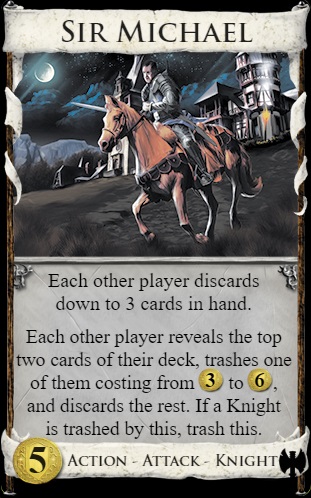
 and for giving money-centric decks a really hard time gaining the last few Provinces and closing out the game. Slap that onto a Knight, whose presence makes the
and for giving money-centric decks a really hard time gaining the last few Provinces and closing out the game. Slap that onto a Knight, whose presence makes the 
